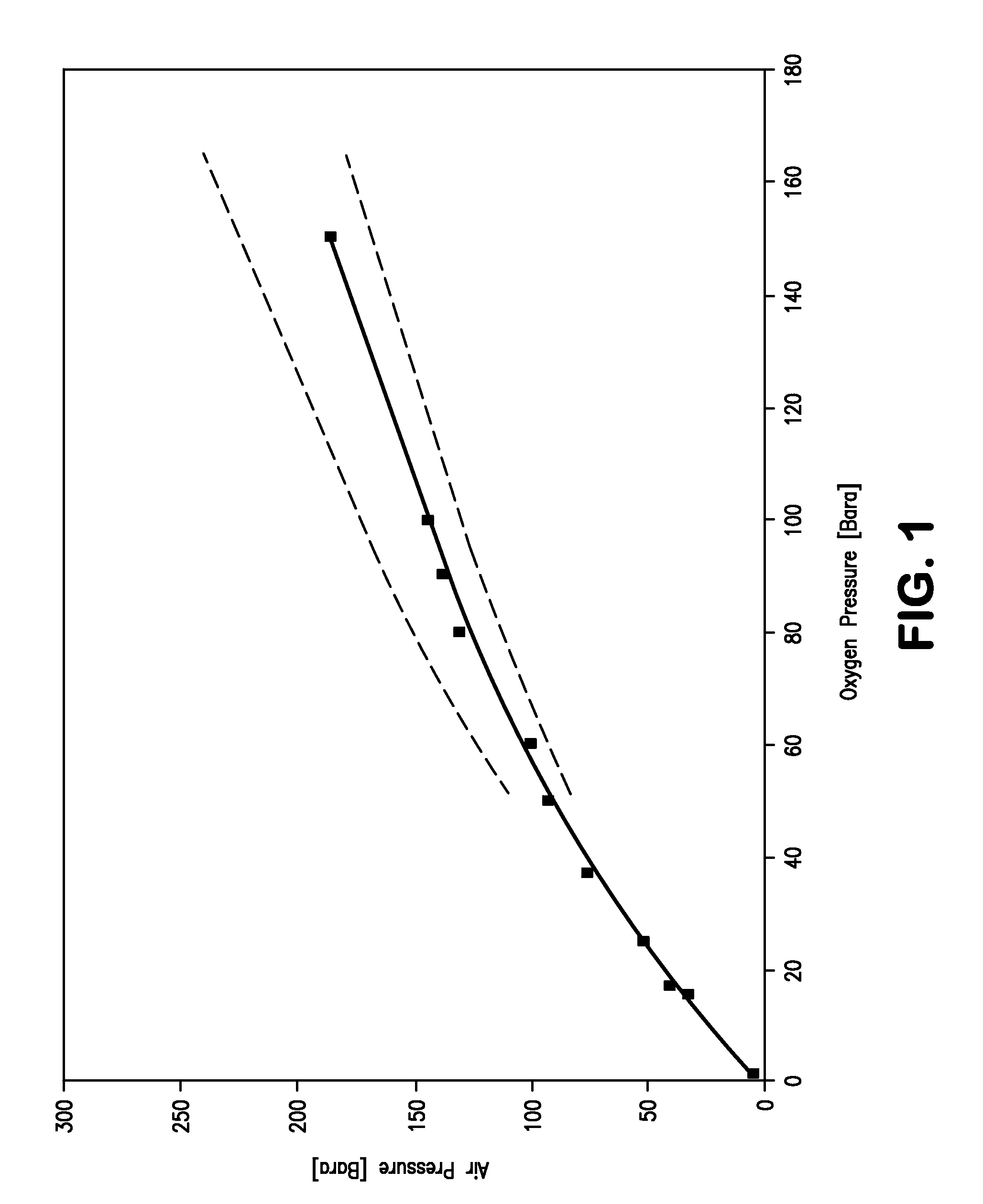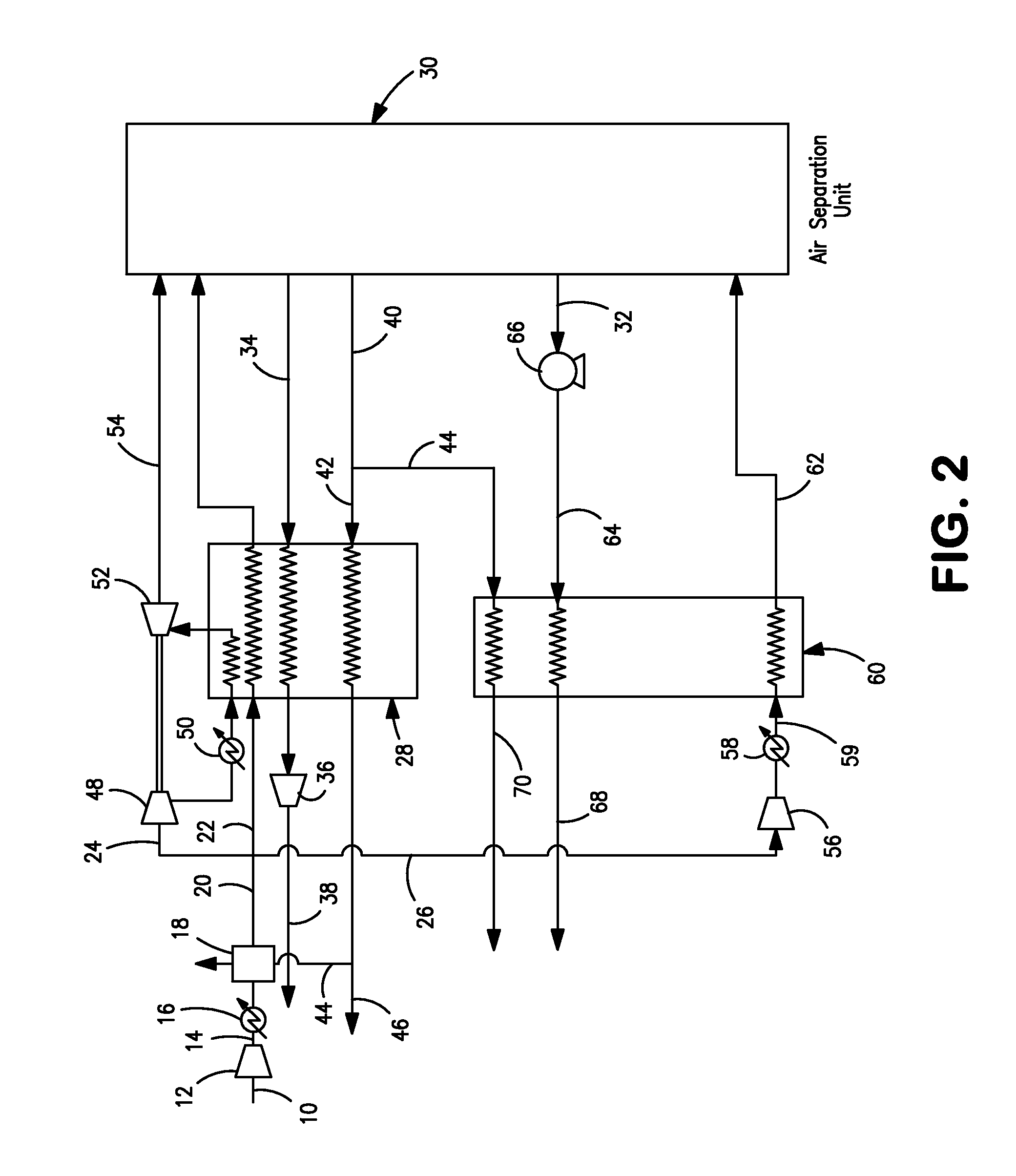Air separation apparatus and method
a technology of air separation and air compressor, which is applied in the direction of lighting and heating equipment, laminated elements, solidification, etc., can solve the problems of not giving details regarding the design of the heat exchanger itself, the most efficient operation of the plant with respect to electrical power, and the use of more expensive coiled heat exchangers, etc., to achieve the effect of improving the overall power consumption of the air separation plant, improving the power consumption of the booster air compressor, and improving the unit power
- Summary
- Abstract
- Description
- Claims
- Application Information
AI Technical Summary
Benefits of technology
Problems solved by technology
Method used
Image
Examples
Embodiment Construction
[0029]With reference to FIG. 1, the illustrated curve shown in a solid line represents the air pressure required to heat pumped liquid oxygen in accordance with the present invention at a particular oxygen pressure to produce an oxygen product as a result of the pumping and the heating as a supercritical fluid. When such air pressure is used, the minimum compression power will be obtained for a particular oxygen pressure.
[0030]As would be known in the art, the power expended in compressing the air has two components, namely, the pressure to which the air is to be compressed and the flow rate of the air. The air pressure and flow rate in turn must be sufficient to heat the oxygen at a specified flow rate and pressure from a pressurized liquid to a supercritical fluid after having passed through a heat exchanger. Obviously, the lower the flow rate of the air, the higher the required pressure and vice-versa that is required for a particular flow and pressure of the oxygen. Although the...
PUM
 Login to View More
Login to View More Abstract
Description
Claims
Application Information
 Login to View More
Login to View More - R&D
- Intellectual Property
- Life Sciences
- Materials
- Tech Scout
- Unparalleled Data Quality
- Higher Quality Content
- 60% Fewer Hallucinations
Browse by: Latest US Patents, China's latest patents, Technical Efficacy Thesaurus, Application Domain, Technology Topic, Popular Technical Reports.
© 2025 PatSnap. All rights reserved.Legal|Privacy policy|Modern Slavery Act Transparency Statement|Sitemap|About US| Contact US: help@patsnap.com



